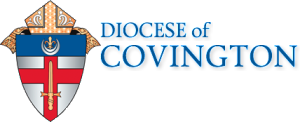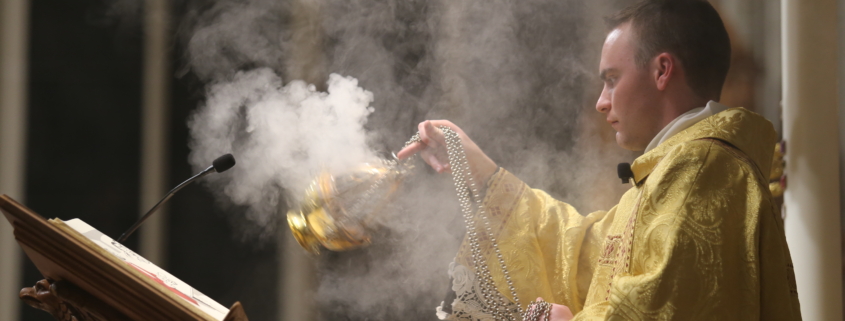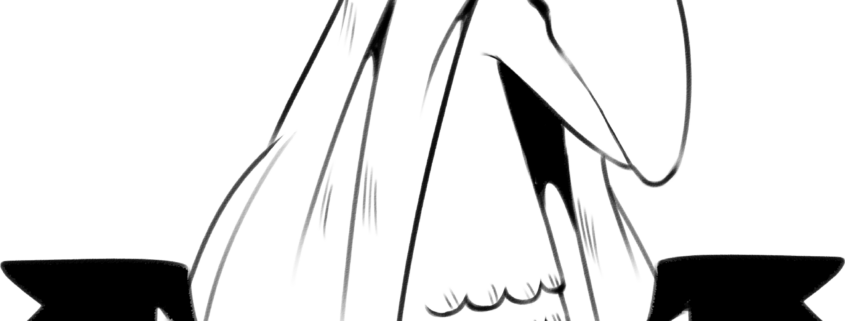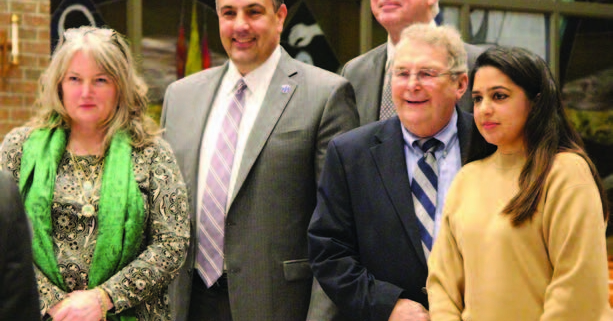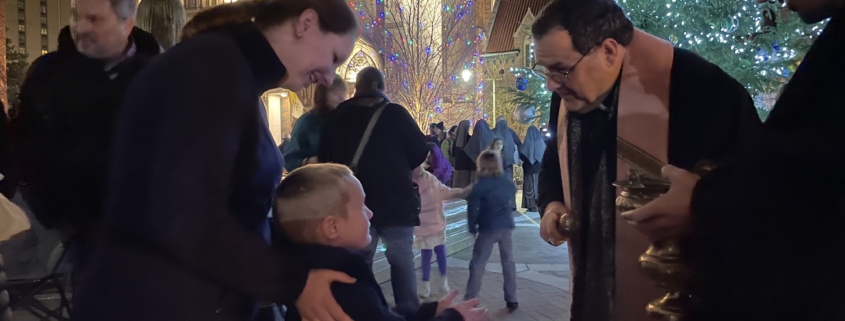During discernment, the priesthood always came out ‘on top,’ says Deacon Elmlinger as he prepares for ordination
Maura Baker, Staff Writer
On a Lenten evening, at around eight years old, Deacon Michael Elmlinger recalls his parents walking in through the front door. “My dad said to all of us,” Michael Elmlinger said, “it would be nice if there was a priest in the family.”
While Deacon Elmlinger, as one of four boys in his family, knew that the comment wasn’t “singling him out,” the words stuck with him.
The discernment of Deacon Elmlinger’s vocation to the priesthood was a “buildup throughout the years,” he said, but, now, years later, the diocese prepares to welcome him into the presbyterate with his ordination to the priesthood scheduled for Friday, June 2, at 6 p.m.
Throughout high school and onwards, Deacon Elmlinger said that whenever he would consider what he wanted to do with his life, the idea of the priesthood always would “come out on top, even if it seemed that I was going in another direction.”
“It just seemed like there was a tug of war going on between the priesthood and whatever other vocational path I was thinking about,” he said. “And then, going into seminary that tug of war just continued.”
Despite this, Deacon Elmlinger said that as he began to go through seminary, “slowly over time”, he began to feel more at peace with the decision.
Going through seminary, one of the most difficult challenges was the lifestyle adjustments he had to go through, he said — such as daily Mass and Holy Hour. “It was very different from what I was used to, and I think there was a little bit of an adjustment period there in the beginning … and discernment in the very beginning of seminary was very difficult.”
“It was really hard at first to know where it was God was trying to lead me,” he said, “It took a lot of time. But, luckily, I had a great spiritual director while I was in Columbus, and a great spiritual director up here. They really helped me to discern where it is that God is calling me.”
Deacon Elmlinger began his seminary studies at the Pontifical College Josephinum, Columbus, completing them at St. Vincent Seminary, Latrobe, Penn.
His father’s death also proved to be a challenge. “That was one of the hardest points in my life,” he said, “There was a brief moment where I had considered stepping away from seminary.”
“But, as I continued to pray about it, it just didn’t seem like the right decision— the person who planted the seed of my vocation was gone like that,” but he stuck to the seminary and continued his studies to the priesthood.
Two saints will be included in the litany at Deacon Elmlinger’s ordination: St. Dymphna, and St. Peregrine.
“St. Dymphna is the patron saint of people with anxiety and mental disorders,” said he said about the saint, “Which, anxiety is something that runs in my family, so she’s been a great intercessor for us.”
“And St. Peregrine, being the patron of those with incurable diseases and cancer,” and, since Deacon Elmlinger’s father had died due to lung cancer, “St. Peregrine also became a major part of our devotional life and my family.”
Deacon Elmlinger’s family will also be participating in his ordination Mass, with his siblings presenting the gifts to Bishop John Iffert.
“I’m very excited,” Deacon Elmlinger said, “because this is something that I’ve been preparing myself for, for the last seven or so years. It’s also kind of surreal, in the sense that it (the ordination) is about here. I remember when I first entered seminary, it seemed like it was a long time away, and all of a sudden, here we are.”
“There are so many people I have to thank for getting me to this point. I would not be here without the support of the people of the diocese or the support of my family,” he said, “It’s really encouraging, especially in those difficult times when it feels like you’re not really sure what you’re supposed to do. It’s really encouraging seeing all the support that comes your way, amidst it all, and I don’t think I could thank people enough for everything they’ve done.”
With praise and thanksgiving to the eternal Triune God, the Roman Catholic Diocese of Covington requests the honor of your presence at the ordination of
Michael Kenton Elmlinger
to the sacred Priesthood of Jesus Christ through the power of the Holy Spirit and the imposition of hands by the Most Rev. John C. Iffert, Bishop of Covington
Friday, June 2, 6 p.m.
Cathedral Basilica of the Assumption, 1130 Madison Avenue, Covington
